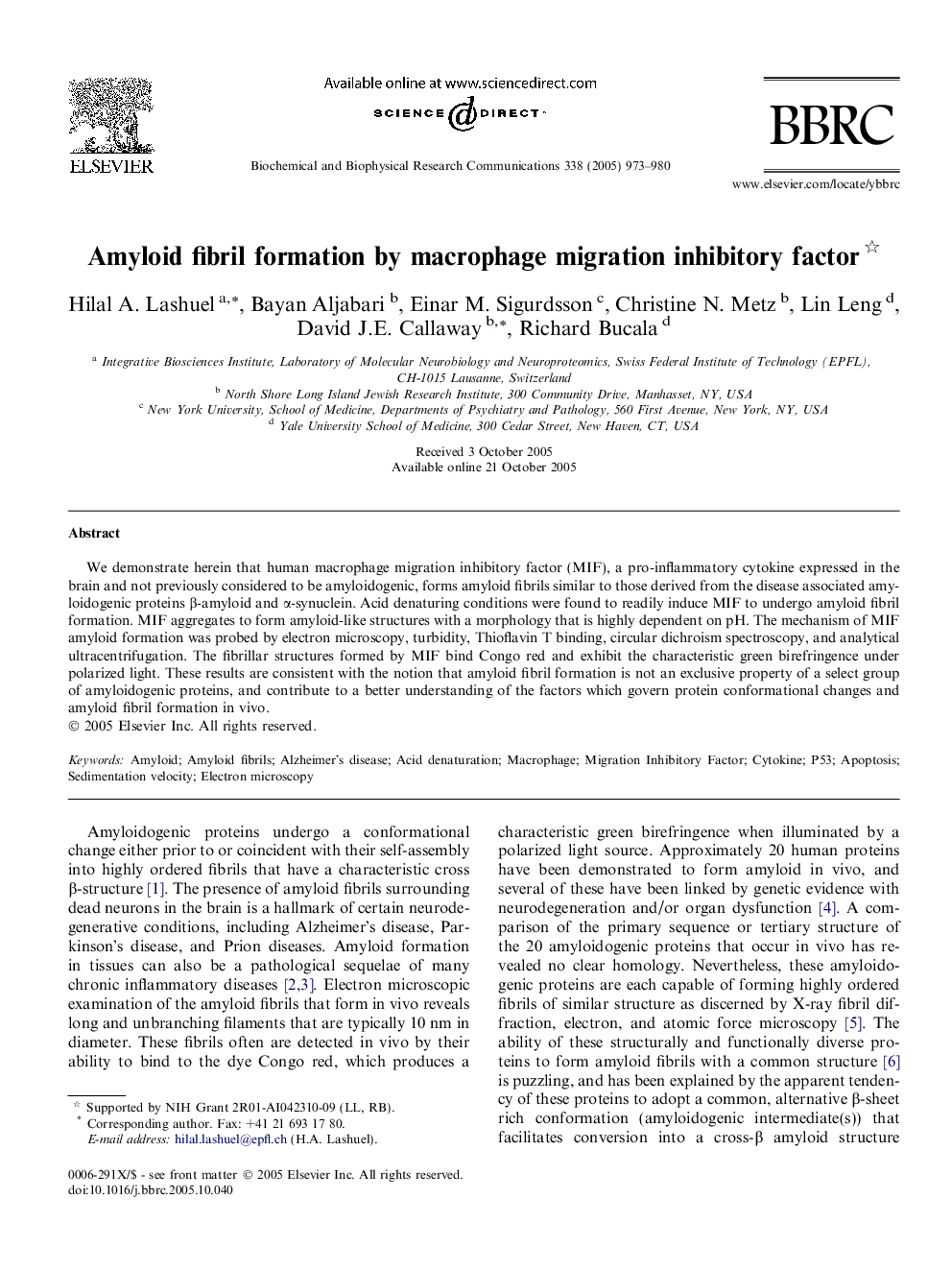| Article ID | Journal | Published Year | Pages | File Type |
|---|---|---|---|---|
| 10767898 | Biochemical and Biophysical Research Communications | 2005 | 8 Pages |
Abstract
We demonstrate herein that human macrophage migration inhibitory factor (MIF), a pro-inflammatory cytokine expressed in the brain and not previously considered to be amyloidogenic, forms amyloid fibrils similar to those derived from the disease associated amyloidogenic proteins β-amyloid and α-synuclein. Acid denaturing conditions were found to readily induce MIF to undergo amyloid fibril formation. MIF aggregates to form amyloid-like structures with a morphology that is highly dependent on pH. The mechanism of MIF amyloid formation was probed by electron microscopy, turbidity, Thioflavin T binding, circular dichroism spectroscopy, and analytical ultracentrifugation. The fibrillar structures formed by MIF bind Congo red and exhibit the characteristic green birefringence under polarized light. These results are consistent with the notion that amyloid fibril formation is not an exclusive property of a select group of amyloidogenic proteins, and contribute to a better understanding of the factors which govern protein conformational changes and amyloid fibril formation in vivo.
Keywords
Related Topics
Life Sciences
Biochemistry, Genetics and Molecular Biology
Biochemistry
Authors
Hilal A. Lashuel, Bayan Aljabari, Einar M. Sigurdsson, Christine N. Metz, Lin Leng, David J.E. Callaway, Richard Bucala,
